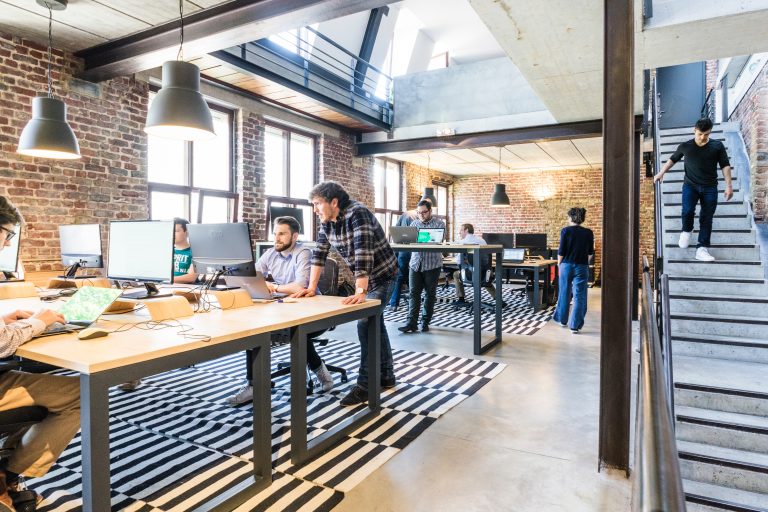How Can Local SEO Help My Brick-and-Mortar Store?
In the age of digital dominance, where online shopping carts often replace physical trolleys, one might wonder, “Is there a place for my brick-and-mortar store in this vast digital landscape?” The answer, my dear reader, is a resounding “Yes!” And the magic wand that can make your physical store shine brighter than a kangaroo in the Australian sun is none other than Local SEO.
Now, before you start imagining SEO as some tech wizardry that only the nerdiest of nerds can comprehend, let me assure you—it’s not as complex as it sounds. Especially when you have a guide like this to walk you through the sunburnt streets of the Australian local business landscape. So, tighten your seatbelts, or should I say, lace up your boots, as we embark on this enlightening journey.
Are you looking for experts in local seo services? Go local first are here to help.
What is Local SEO?
Defining Local SEO
Local SEO, or Local Search Engine Optimization, is the art (yes, it’s an art!) of optimizing your brick-and-mortar business for local online searches. Think of it as the digital equivalent of placing your store’s signboard in the most visible spot on the high street. It ensures that when someone in your vicinity searches for products or services you offer, your business pops up in their search results faster than a cork from a champagne bottle.
The Difference Between General SEO and Local SEO
Now, you might be thinking, “Isn’t SEO just SEO? Why the ‘local’ prefix?” Well, while general SEO focuses on improving your website’s visibility on a global scale, Local SEO is all about attracting customers right from your backyard. It’s the difference between being known as the best pie shop in the world and being the go-to pie shop in Melbourne, Sydney, or wherever your heart (and business) resides.
Imagine you’re craving a delicious meat pie. You’re not going to search for “best meat pie in the world.” Instead, you’ll likely type “best meat pie near me” or “meat pie in [your suburb].” That’s where Local SEO comes into play. It ensures that local businesses, like yours, don’t get lost in the vastness of the internet and remain relevant to the local folks who are, quite literally, searching for you.
Why is Local SEO Crucial for Brick-and-Mortar Stores in Australia?
The Rise of “Near Me” Searches
Over the past few years, there’s been a significant uptick in “near me” searches. Blame it on our ever-decreasing patience levels or the sheer convenience of finding services nearby; these searches are all the rage. According to a study by Google, there’s been a 200%+ growth in “near me” searches. So, if your business isn’t optimized for these golden keywords, you’re missing out on a massive chunk of potential customers.
Trust and Credibility with Local Customers
There’s something inherently trustworthy about a local business. Maybe it’s the familiarity, or perhaps it’s the community vibe. Whatever it is, Australians love their local businesses. And with Local SEO, you can further cement your place in their hearts (and search results). By ensuring your business details are consistent across the web, gathering and showcasing positive reviews, and engaging with local customers online, you’re not just another store; you’re the store.
The Australian Consumer Behaviour
Australians have a unique way of shopping. We value quality, trustworthiness, and, most importantly, locality. A report by Australia Post highlighted that 73% of online shoppers in Australia prefer buying from Australian websites. Translate that behaviour to brick-and-mortar stores, and you can see why Local SEO is not just beneficial but essential.
Key Local SEO Strategies for Brick-and-Mortar Stores
Google My Business (GMB) Optimization
Your Business’s Digital Shopfront
Think of Google My Business as your store’s digital window display. Just as you’d meticulously arrange products in your shop window to attract passersby, your GMB listing needs to be equally enticing to catch the eye of digital wanderers.
Claiming and Optimizing Your GMB Listing
If you haven’t claimed your GMB listing yet, you’re essentially letting someone else decorate your window display. Not ideal, right? Claiming your listing ensures you have control over the information displayed. Once claimed, it’s time to roll up your sleeves and optimize:
- Accurate Information: Ensure your business name, address, and phone number (NAP) are accurate. Remember, consistency is key!
- High-Quality Photos: Showcase your store, products, and happy customers. A picture speaks a thousand words, especially when it’s in high resolution.
- Engaging Posts: Use GMB posts to promote events, offers, or new arrivals. Keep the buzz alive!
- Respond to Reviews: Whether they’re singing praises or voicing concerns, always respond. It shows you care.
Utilizing GMB Features
Google loves it when you use its features (no surprises there!). From the Q&A section to booking integrations, make sure you’re making the most of what GMB offers. And hey, if Google’s offering a free tool that can boost your local visibility, it’d be rude not to, right?

Local Citations and Directory Listings
The Digital Word-of-Mouth
Back in the day, word-of-mouth was the holy grail of local marketing. Now, in the digital age, local citations and directory listings are its equivalent. They’re like those community notice boards, but with a much, much larger audience.
The Role of Local Directories
Websites like TrueLocal, Yellow Pages, and Yelp are goldmines for local businesses. Not only do they increase your online visibility, but they also provide valuable backlinks to your website.
Consistent NAP Across Listings
Remember when we talked about the importance of consistent NAP in GMB? The same rule applies here. Ensure your business details are consistent across all directories. It’s not just for the sake of customers; search engines love consistency too. It’s like serving them a perfectly brewed cuppa every time.
Localised Content Creation
Speak Their Language (Literally)
Creating content that resonates with the local audience is crucial. It’s not just about using Aussie slang (though a well-placed “G’day” never hurts); it’s about understanding local issues, events, and culture.
Incorporating Local Keywords
If you’re a bookstore in Perth, content around “Best beach reads in Perth” or “Top authors from Western Australia” can be a hit. Use tools like Google’s Keyword Planner to find local keywords that your audience is searching for.
Engaging with Local Events and News
Sponsoring a local event? Write about it. A local festival coming up? Create a guide. The more you engage with local happenings, the more you solidify your position as a community-centric business.
Earning and Managing Online Reviews
The Digital Word-of-Mouth (Part 2)
Reviews are the modern-day personal recommendations. A glowing review can bring in a flurry of customers, while a negative one, if not handled correctly, can keep them away.
Encouraging Positive Reviews
Happy customers are often silent. Give them a nudge! Politely ask satisfied customers to leave a review. Maybe even incentivise it with a small discount on their next purchase.
Handling Negative Feedback
No one likes criticism, but in the business world, it’s inevitable. Respond to negative reviews with grace and professionalism. Address the issue, apologise if necessary, and assure the customer (and potential customers reading the review) that you’re taking steps to prevent it in the future.
Measuring the Success of Your Local SEO Efforts
Key Performance Indicators (KPIs) for Local SEO
The Digital Scorecard
Just as a cricket match isn’t complete without its scoreboard, your Local SEO efforts aren’t complete without tracking KPIs. These indicators give you a clear picture of how well your strategies are working (or if they’ve gone down under).
- Local Search Rankings: Are you appearing in the top results when someone searches for your business type in your locality? If not, there’s room for improvement.
- Website Traffic from Local Searches: A surge in local visitors indicates your Local SEO is on point.
- Click-through Rate (CTR) from Local Listings: High CTR? Your listings are appealing. Low CTR? Time to jazz them up.
- Conversion Rate from Local Traffic: It’s not just about attracting visitors; it’s about turning them into customers.
Tools and Platforms for Tracking Local SEO Performance
Your Digital Toolbox
In the vast shed of digital marketing, there are tools aplenty. But for Local SEO, you need some specific ones that can help you dig deep and unearth valuable insights.
- Google Analytics: The Swiss Army knife of digital analytics. Track where your visitors are coming from, what they’re doing on your site, and if they’re converting.
- Google Search Console: See which local keywords are driving traffic to your site. It’s like having a sneak peek into your customers’ minds.
- Moz Local: This tool checks how your business is listed across the web. It’s the digital equivalent of ensuring your shop sign is hanging straight.
- BrightLocal: Track your local search performance, monitor reviews, and spy on competitors. All’s fair in love, war, and Local SEO.
The Bigger Picture: ROI of Local SEO
Counting the Dollars and Sense
At the end of the day, it all boils down to one thing: Is your Local SEO bringing in more business? To determine this, you need to calculate the Return on Investment (ROI) of your efforts.
Calculating ROI: It’s simple maths, really. Subtract the cost of your Local SEO efforts from the revenue it brought in. Then, divide by the cost of your Local SEO efforts and multiply by 100. Voila! You’ve got your ROI percentage.
If the number is positive, give yourself a pat on the back (or maybe treat yourself to a Tim Tam or two). If it’s negative, don’t fret. SEO is a long game, and with the strategies listed above, you’re bound to see positive results soon.
For more information about marketing check out the governments marketing page.
FAQs on Local SEO for Brick-and-Mortar Stores
Why is my business not showing up in local searches?
Ah, the age-old conundrum. There could be several reasons for this digital hide-and-seek:
- Incomplete or Unclaimed GMB Listing: If you haven’t claimed or fully optimized your Google My Business listing, you’re essentially playing hide-and-seek with your customers.
- Inconsistent NAP: If your Name, Address, and Phone Number vary across different listings, search engines might get confused. And a confused search engine is not your friend.
- Lack of Local Citations: Not being listed in local directories or having inconsistent citations can affect your local search visibility.
- Poor Online Reputation: Too many negative reviews without responses can push your business down in rankings.
How long does it take to see results from Local SEO?
Local SEO isn’t instant coffee; it’s more like a fine wine that takes time. Typically, businesses start seeing noticeable improvements in 3-6 months. However, this can vary based on competition, the current state of your Local SEO, and the efforts you put in. Patience, dear reader, is the key.
Can I do Local SEO on my own or should I hire a professional?
The DIY vs. Expert debate! While Local SEO isn’t rocket science, it does require a certain level of expertise and time commitment. If you’re a business owner juggling multiple responsibilities, hiring a professional might be more efficient. However, if you’re keen on learning and have the time, there are plenty of resources (like this blog!) to guide you.
How does voice search impact Local SEO?
“Hey Siri, where’s the nearest coffee shop?” Sound familiar? With the rise of voice-activated assistants, voice search is becoming increasingly prevalent. For Local SEO, this means:
- Natural Language: Voice searches are more conversational. So, instead of “best coffee Sydney,” it might be “where can I get the best coffee in Sydney?”
- Question-Based Queries: Voice searches often start with “who,” “what,” “where,” “when,” “why,” or “how.” Optimizing for these can give you an edge.
- Mobile Optimization: Most voice searches are done on mobile. Ensuring your website is mobile-friendly is crucial.
Local SEO is the unsung hero for brick-and-mortar stores in the digital age. It ensures that while the world is going digital, local businesses don’t get left behind. By optimizing for local searches, engaging with the local community, and ensuring a consistent online presence, your brick-and-mortar store can enjoy the spotlight it truly deserves.
Inspired to kickstart your Local SEO journey? Or maybe you have more questions? Either way, we at GoFirstLocal are here to help. With expertise tailored for the Australian market, we’re your go-to Local SEO guides. Get in touch today and let’s make your business the talk of the town (literally)!
And there you have it! A comprehensive guide to Local SEO for brick-and-mortar stores in Australia. Whether you’re just starting out or looking to refine your strategies, this guide has got you covered. Until next time, mates!







